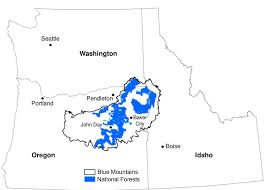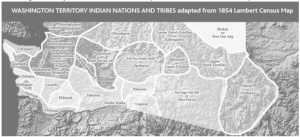We’ve discussed the use of land exchanges that would facilitate the growth of urban areas by giving them more private land in logical growth areas using the example of Las Vegas. At a different scale, the town of Tusayan appears to be an inholding in the Kaibab National Forest, which limits its growth opportunities. They have been looking at a proposal to develop a nearby separate inholding (which the town owns a part of). It would require a special use permit to for roads and utilities to cross national forest lands. It has been controversial (attracting unwanted attention according to the town; the 2nd Twitter link works), and the town has just approved a revised proposal, which will be submitted to the Forest Service. The Kaibab National Forest rejected the last proposal in 2016 as inconsistent with the requirements for a special use permit. Here is a part of the rationale that relates to the forest plan:
CFR 251.54(e)(l)(ii) requires that the proposed use must be consistent, or can be made consistent, with the Kaibab Forest Plan. The Forest Plan envisions management at a landscape scale by taking an “all-lands approach,” and specifies strategies to achieve the desired conditions and objectives in the Plan, including working closely with partners and across administrative boundaries to meet common objectives. The development that would be enabled by authorization of the proposed use of NFS lands could substantially and adversely affect Tribal lands and the Grand Canyon National Park.
36 CFR 251.54(e)(l)(v) provides that the proposed use must not unreasonably interfere with the use of adjacent non-National Forest System lands. The FS received written comments from the National Park Service (NPS) through the Principal Deputy Assistant Secretary of the Interior for Fish Wildlife and Parks which pointed out that potential impacts to the Outstanding Universal Value of the Grand Canyon National Park (GCNP), either from the roads that would be authorized by easement or the reasonably foreseeable development on the two private properties that would be enabled by the roads and other facilities, are of concern. The GCNP also raised concerns in a meeting regarding impacts on infrastructure that they share with the Town of Tusayan. The NPS was concerned that any activity that would result in significant increases in visitation or occupation near the Park would affect the Park’s capacity to absorb the additional use.
The first rationale is an interesting “all-lands” interpretation of its forest plan to encompass the objectives of the National Park Service and tribal lands. The second rationale stands on its own, but it also explains what those interests are. It’s not obvious that the recent modifications in the proposal are going to address these concerns, so I expect we’ll be seeing more about this. (Here is the CBD take on the original proposal.)

 Copyright: Photowitch | Dreamstime.com
Copyright: Photowitch | Dreamstime.com



